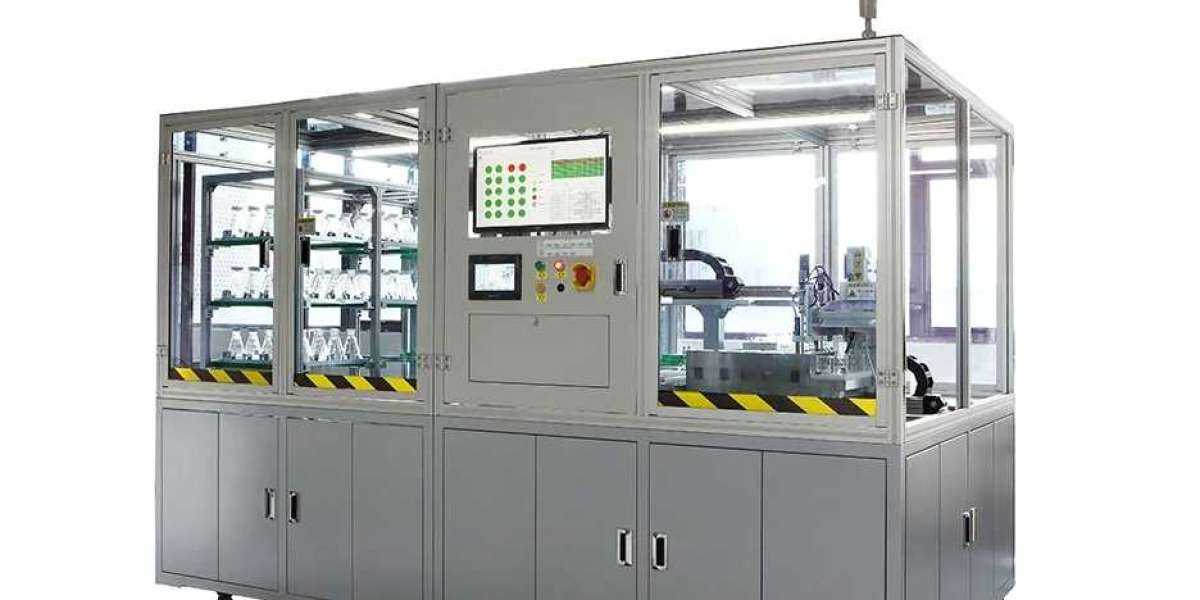Introduction to pH Monitoring
pH monitoring may not be the most glamorous topic, but it plays a vital role in numerous industries. Whether you're producing food and beverages, manufacturing chemicals, or even keeping your swimming pool clean and safe, maintaining the right pH balance is crucial. Thankfully, we now have automated pH monitoring systems that take the guesswork out of this important task.
Gone are the days of manually testing pH levels with litmus paper and color charts. With fully automatic pH measurement technology, accuracy and efficiency are at an all-time high! In this blog post, we'll explore how automated pH monitoring systems are revolutionizing various industries while ensuring precise results every time.
So grab your lab coat or hard hat, because we're about to dive into the world of automated pH monitoring and uncover its many benefits for businesses like yours!
The Importance of pH Balance in Various Industries
PH balance is a crucial factor in many industries, playing a vital role in ensuring quality and efficiency. In the agricultural sector, for example, maintaining proper pH levels in soil is essential for optimal plant growth and nutrient absorption. By monitoring the pH level, farmers can make adjustments to ensure their crops receive the ideal conditions for development.
In the food and beverage industry, pH control is equally important. It affects taste, texture, and preservation of products. For instance, in brewing beer or making cheese, controlling acidity through precise pH measurements guarantees consistency and desired flavors.
Pharmaceutical companies also rely on accurate pH monitoring during drug formulation and production processes. The effectiveness of certain medications can be significantly influenced by slight changes in acidity or alkalinity levels. Therefore, maintaining strict control over these parameters helps ensure product efficacy and patient safety.
Water treatment plants use automated pH monitoring systems to regulate water quality as well. Properly balanced water ensures safe consumption while preventing corrosion or damage to infrastructure components like pipes.
Overall,pH balance plays an indispensable role across various industries by guaranteeing product quality standards are met while optimizing processes for maximum efficiency.
Introducing Automated pH Monitoring Systems
Automated pH monitoring systems have revolutionized the way industries maintain optimal pH levels in their processes. These advanced instruments offer a range of benefits that surpass traditional manual methods.
The introduction of automated pH monitoring systems has greatly improved accuracy and efficiency. With fully automatic pH measurement, these instruments provide precise readings that eliminate human error and ensure reliable data collection. This is especially crucial in industries where even slight variations in pH can have significant consequences.
One major advantage of automated systems is their ability to continuously monitor pH levels without requiring constant supervision. Unlike manual methods that may only capture periodic measurements, automated systems provide real-time data updates. This allows for prompt adjustments or interventions whenever necessary, minimizing downtime and optimizing productivity.
Accuracy Laboratory pH Instruments from Ningbo Textile Instrument Factory are designed with cutting-edge technology to deliver accurate results consistently. These high-quality instruments are specifically developed for laboratory settings, ensuring precision and reliability in scientific research and testing applications.
In addition to accuracy, automated pH monitoring systems also offer convenience and ease of use. They come equipped with user-friendly interfaces and intuitive controls, making them accessible even for those with limited technical expertise. Furthermore, many modern models feature wireless connectivity options, allowing users to remotely access data or receive alerts through mobile devices.
Implementing an automated system requires careful consideration and planning to ensure optimal functionality within specific industry requirements. Factors such as installation location, calibration procedures, maintenance schedules must be taken into account during implementation. It's essential to consult with experts who can guide you through the process tailored to your needs.
Overall, the introduction of Automated pH Monitoring Systems has transformed various industries by providing accurate measurements while reducing human error significantly! With continuous monitoring capabilities (avoid repetitive words) combined with user-friendly interfaces (avoid repetitive phrases), these innovative instruments optimize productivity while ensuring consistent quality control throughout manufacturing processes!
Advantages of Automated pH Monitoring
Automated pH monitoring systems offer numerous advantages over traditional manual methods. One major benefit is the increased accuracy and precision they provide. These automated instruments are designed to deliver highly accurate measurements, ensuring reliable results every time.
Another advantage of automated pH monitoring is the time-saving aspect. With a fully automatic system, there is no need for constant manual adjustments or frequent calibration checks. This allows technicians to focus on other tasks while the instrument takes care of continuous pH measurement.
Additionally, automated pH monitoring systems often come with built-in data logging capabilities. This means that all the measured data can be easily recorded and stored for future reference or analysis. It eliminates the risk of human error in recording measurements and provides a convenient way to track trends over time.
Furthermore, these advanced instruments typically have user-friendly interfaces and intuitive controls, making them easy to operate even for those without extensive technical expertise. Training requirements are minimal, allowing operators to quickly become proficient in using the equipment.
Implementing an automated pH monitoring system can lead to cost savings in the long run. By reducing labor-intensive manual processes and minimizing human errors, companies can improve efficiency and productivity while maintaining high-quality standards.
In conclusion, automated pH monitoring offers several significant advantages including improved accuracy, time-saving features, data logging capabilities, ease of use, and potential cost savings. These benefits make it a valuable tool across various industries where precise control over pH levels is crucial for product quality and process optimization.
Considerations for Implementing Automated pH Monitoring
Implementing automated pH monitoring systems can provide numerous benefits to various industries. However, before making the decision to invest in this technology, there are several considerations that need to be taken into account.
It is important to assess the specific needs and requirements of your industry or application. Different industries may have different pH monitoring needs, so understanding these requirements will help you choose the most suitable automated pH monitoring system.
It is crucial to select a reliable and reputable supplier for your automated pH monitoring system. Look for a company with experience in producing accurate laboratory pH instruments. Companies like Ningbo Textile Instrument Factory have a strong reputation in providing high-quality products.
Additionally, consider the integration capabilities of the automated pH monitoring system with existing equipment or software used in your industry. Compatibility and ease of integration can streamline operations and improve efficiency.
Furthermore, take into account factors such as cost-effectiveness and long-term maintenance when implementing automated pH monitoring systems. Consider both upfront costs and ongoing expenses associated with calibration, maintenance, and potential repairs.
Ensure that proper training is provided to personnel who will be using the automated pH monitoring system. Adequate training will maximize its effectiveness and accuracy while minimizing errors or mishandling.
By carefully considering these factors before implementing an automated pH monitoring system, you can make an informed decision that aligns with your industry's specific needs while reaping all the benefits this technology has to offer.
Conclusion
Automated pH monitoring systems have revolutionized the way industries measure and maintain pH balance. These advanced instruments, such as the accurate laboratory pH instruments produced by Ningbo Textile Instrument Factory, offer numerous benefits that make them invaluable in various applications.
From ensuring product quality and safety in food and beverage production to optimizing chemical processes in manufacturing plants, automated pH monitoring systems provide real-time data, accuracy, efficiency, and convenience. They eliminate human error, save time and resources, enhance productivity, and enable proactive corrective actions.
When implementing automated pH monitoring systems, it is important to consider factors such as the specific requirements of your industry or application, calibration procedures for accurate readings, maintenance needs of the instrument itself, as well as budget considerations.
In summary,"Fully automatic pH measurement" refers to the use of innovative technology that simplifies and streamlines pH monitoring processes across different industries. The accurate laboratory pH instruments produced by Ningbo Textile Instrument Factory are a prime example of high-quality equipment designed to meet industry standards while providing reliable results.
By embracing automation with these advanced instruments from Ningbo Textile Instrument Factory or other reputable manufacturers alike., businesses can ensure optimal performance , achieve consistent product quality ,and make informed decisions based on accurate data .
Investing in automated pH monitoring not only helps prevent costly errors but also contributes to overall operational efficiency. This technology sets a new standard for precision and reliability within various sectors where maintaining proper pH balance is crucial.
So why wait? Upgrade your current monitoring system today! Experience the peace of mind that comes with knowing you have a fully automatic solution by your side: an investment that pays off both now and down the line.








